Xiaoping Xie
A Voice Disease Detection Method Based on MFCCs and Shallow CNN
Apr 18, 2023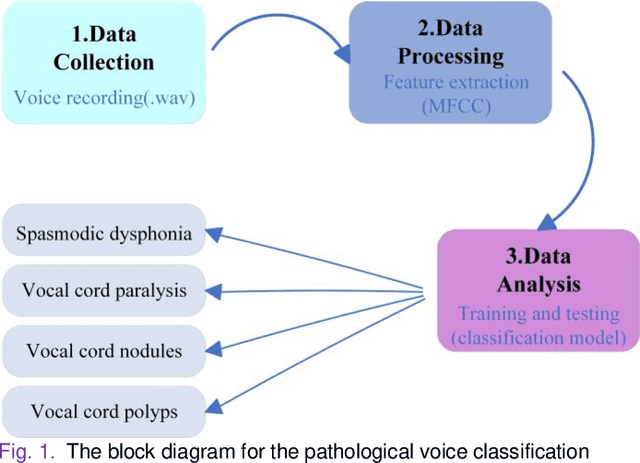
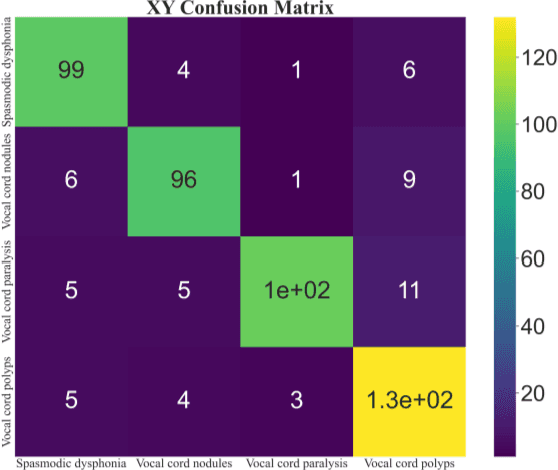
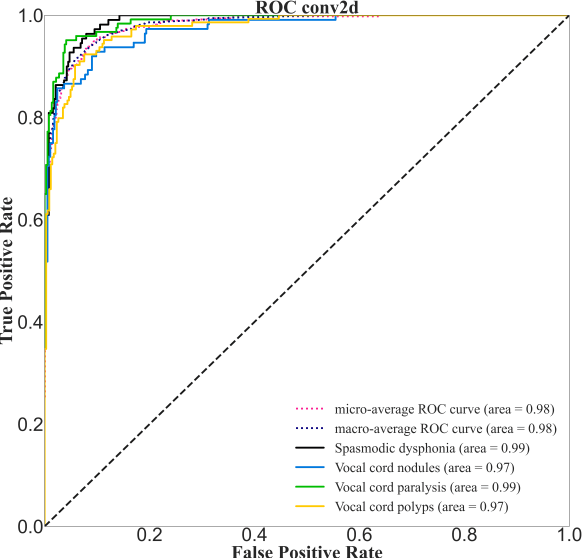
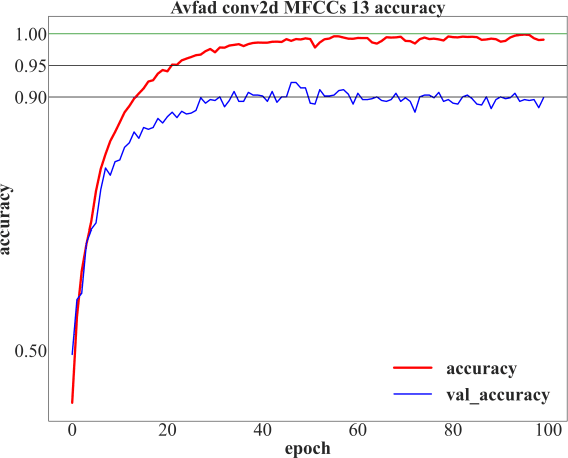
Abstract:The incidence rate of voice diseases is increasing year by year. The use of software for remote diagnosis is a technical development trend and has important practical value. Among voice diseases, common diseases that cause hoarseness include spasmodic dysphonia, vocal cord paralysis, vocal nodule, and vocal cord polyp. This paper presents a voice disease detection method that can be applied in a wide range of clinical. We cooperated with Xiangya Hospital of Central South University to collect voice samples from sixty-one different patients. The Mel Frequency Cepstrum Coefficient (MFCC) parameters are extracted as input features to describe the voice in the form of data. An innovative model combining MFCC parameters and single convolution layer CNN is proposed for fast calculation and classification. The highest accuracy we achieved was 92%, it is fully ahead of the original research results and internationally advanced. And we use Advanced Voice Function Assessment Databases (AVFAD) to evaluate the generalization ability of the method we proposed, which achieved an accuracy rate of 98%. Experiments on clinical and standard datasets show that for the pathological detection of voice diseases, our method has greatly improved in accuracy and computational efficiency.
NFCNN: Toward a Noise Fusion Convolutional Neural Network for Image Denoising
Feb 17, 2021

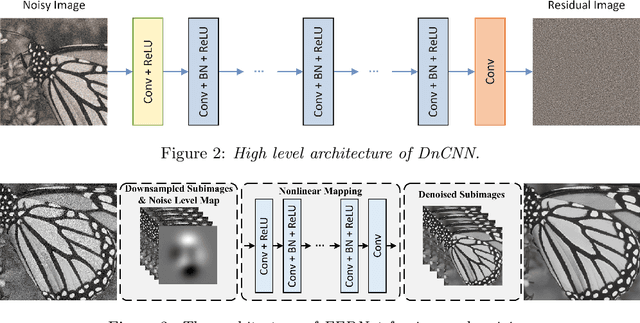

Abstract:Deep learning based methods have achieved the state-of-the-art performance in image denoising. In this paper, a deep learning based denoising method is proposed and a module called fusion block is introduced in the convolutional neural network. For this so-called Noise Fusion Convolutional Neural Network (NFCNN), there are two branches in its multi-stage architecture. One branch aims to predict the latent clean image, while the other one predicts the residual image. A fusion block is contained between every two stages by taking the predicted clean image and the predicted residual image as a part of inputs, and it outputs a fused result to the next stage. NFCNN has an attractive texture preserving ability because of the fusion block. To train NFCNN, a stage-wise supervised training strategy is adopted to avoid the vanishing gradient and exploding gradient problems. Experimental results show that NFCNN is able to perform competitive denoising results when compared with some state-of-the-art algorithms.
An efficient feature-preserving PDE algorithm for image denoising based on a spatial-fractional anisotropic diffusion equation
Feb 07, 2021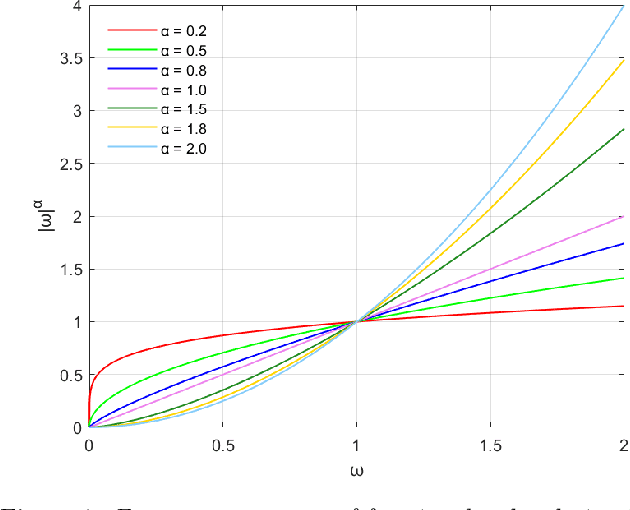
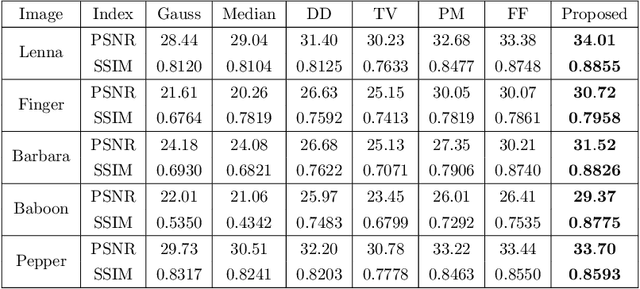

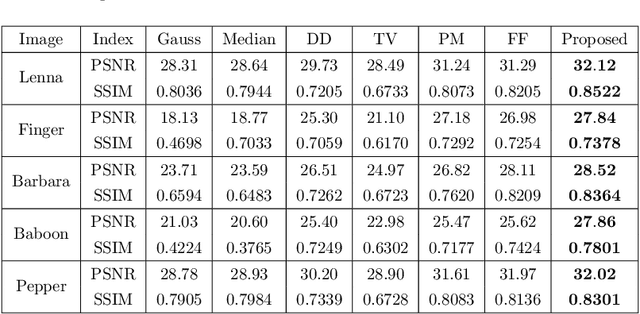
Abstract:How to effectively remove the noise while preserving the image structure features is a challenging issue in the field of image denoising. In recent years, fractional PDE based methods have attracted more and more research efforts due to the ability to balance the noise removal and the preservation of image edges and textures. Among the existing fractional PDE algorithms, there are only a few using spatial fractional order derivatives, and all the fractional derivatives involved are one-sided derivatives. In this paper, an efficient feature-preserving fractional PDE algorithm is proposed for image denoising based on a nonlinear spatial-fractional anisotropic diffusion equation. Two-sided Grumwald-Letnikov fractional derivatives were used in the PDE model which are suitable to depict the local self-similarity of images. The Short Memory Principle is employed to simplify the approximation scheme. Experimental results show that the proposed method is of a satisfactory performance, i.e. it keeps a remarkable balance between noise removal and feature preserving, and has an extremely high structural retention property.
 Add to Chrome
Add to Chrome Add to Firefox
Add to Firefox Add to Edge
Add to Edge